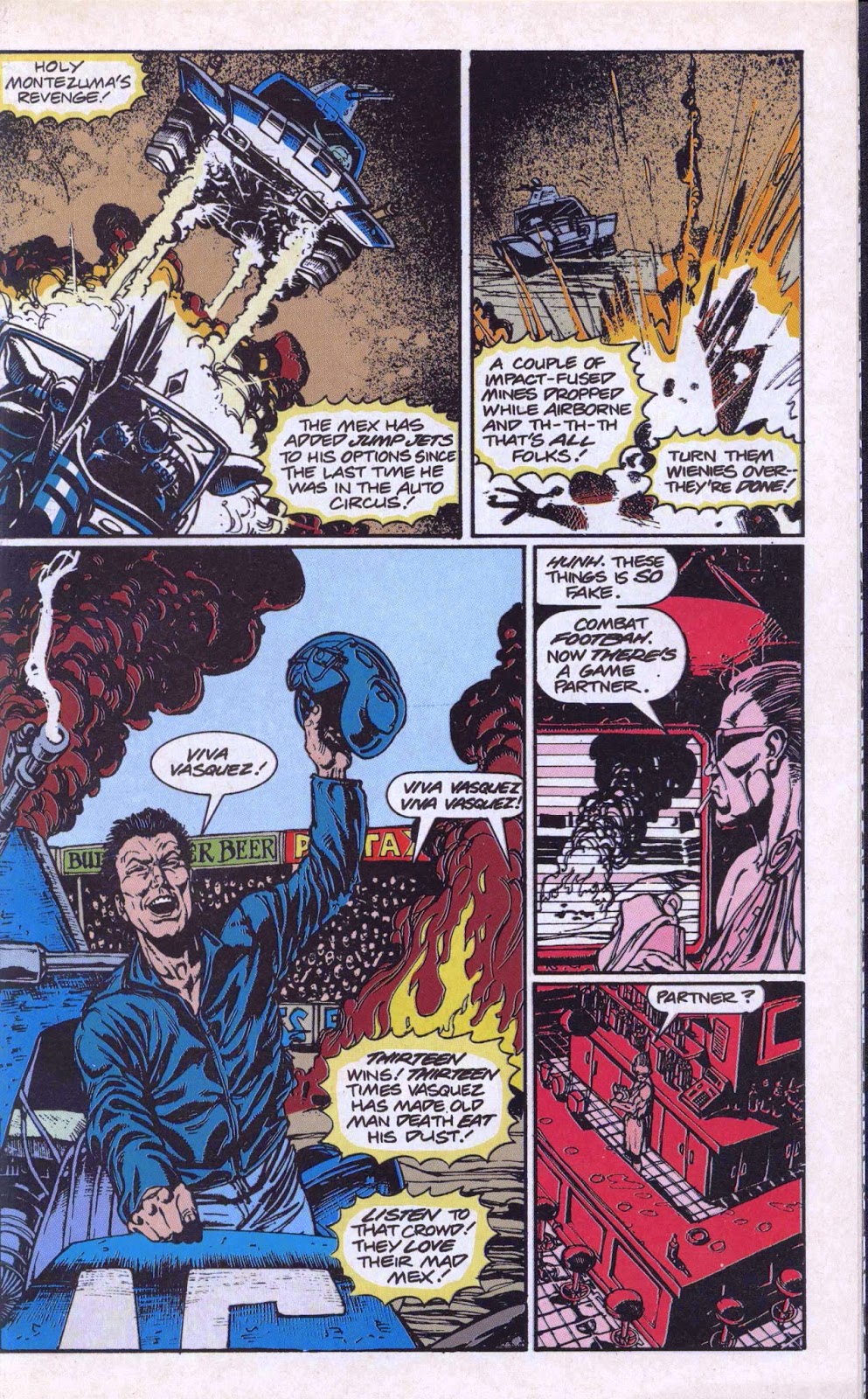issue 1
Epic Comics / Marvel, April, 1991
'Car Warriors' was a four-issue miniseries published from April - September 1991 by Marvel's Epic Comics imprint. The series was based on 'Car Wars', an RPG first released in 1980 by Steve Jackson Games. The game probably drew heavily, in turn, from the 1975 low-budget, cult classic movie Death Race 2000.
The game was subsequently expanded for use with Jackson's GURPS system in the late 1980s, and in 1991 a card game based on 'Car Wars' was released; this may have been the impetus for the publication of the comic book series.
While I'm always skeptical of the quality of comic books based on tie-ins to licensed properties, I was quite pleased with 'Car Warriors'. It's filled with quirky little touches of originality and flair.
For example, the setting is not your usual Mad Max - inspired desert landscape, but rather, the US Heartland, albeit reduced to an economic and ecological wasteland, beset with anarchy and the threat of mass starvation. How many action comics have sequences set in Council Bluffs, Iowa ? Or Green Bay, Wisconsin ?
The hero is an alienated young Mexican man named 'Chevy' Vasquez, aka 'The Meaner Beaner' and 'The Mad Mex'. Once, long ago, when he was a child, Chevy Vasquez had a run-in with one of the Upper Peninsula tribes.....an encounter that left him with nightmares, night sweats, and a growing desire for bloody revenge.
While it offers a good dollop of explicit violence with each issue, 'Car Warriors' also provides plenty of sarcastic humor, which gives these comics extra appeal (to me, anyways).
It also helps that penciller Steve Dillon's artwork is well done, and well complemented by the inks of Phil Winslade and the colors of Steve Buccellato, giving the 'Car Warriors' comic books the appropriately gritty, 'entropic' sensibility this type of tale requires.
So, posted below is the entire contents of the first issue of 'Car Warriors'. Look for the remaining three issues to be posted in the coming months here at the PorPor Books Blog.



































































































